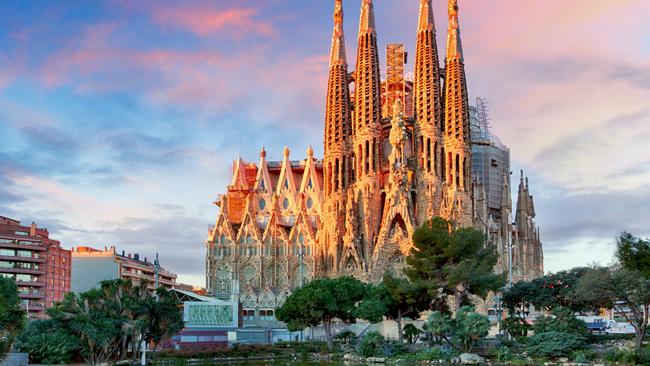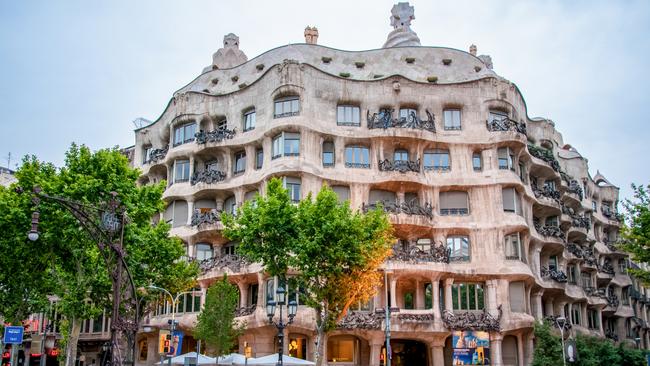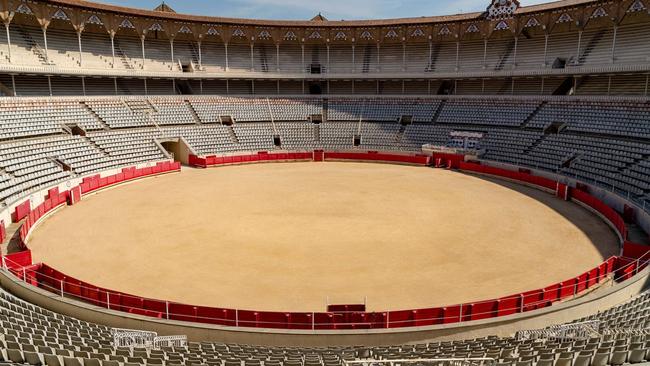Barcelona by design
The Catalan capital’s architectural wonders don’t appeal to everyone.

Sylvie does not want to go to Sagrada Familia. She also does not want to go to Parc Guell. Or Casa Batllo or Casa Calvet. Sylvie is my daughter; she is nine years old and is not particularly interested in the work of Antoni Gaudi, despite the fact his architectural legacies are the top tourist attractions in Barcelona. I dislike crowds but since we are in the city for a few days, surely we can’t forgo paying our respects to the great architect.
“How about Casa Mila?” I suggest. “It’s Barcelona’s second most popular tourist attraction,” I cajole. “It was the last private residence designed by Gaudi and was built between 1906 and 1912.” She agrees, reluctantly. “I just think it’s a bit strange that we’re visiting apartments and we don’t even know anyone who lives there,” she says.
Fair enough. We head north from our hotel along the wide, graceful Passeig de Gracia; it’s midmorning on a sunny Sunday. We’ve already seen several dozen spectacularly beautiful apartment buildings in a variety of styles: belle epoque beside Catalan gothic nudging up next to art nouveau. We pass Casa Batllo, with its balconies that look like the mask from The Phantom of the Opera, and soon arrive at Casa Mila, an elegant art nouveau building with a tilted, undulating facade and black wrought-iron balconies. We make our way along Carrer de Provenca past a row of idling tour buses disgorging multitudes, enter, strap on guided-tour headphones, and prepare for some extreme Gaudí.
The voice on the audio tour belongs to an Irish-accented man. He tells us that when it was completed in 1912, the building was derisively nicknamed La Pedrera because its facade was thought to resemble a stone quarry; the name has stuck. The locals back then despised it, using insulting names such as a rat’s nest, a crocodile’s den, a hangar for Zeppelins and a Mona de Pascua, a Spanish cake eaten at Easter.
We pass through the foyer, then take an elevator up to “the most famous rooftop in the world”, where we admire the iconic chimneys that look like surreal knights’ helmets, and the arch-framed view of La Sagrada Familia a couple of kilometres to the northeast. After we’ve admired the stairways and twisted stone ventilation towers of the rooftop, we’re invited to “take in a last bit of air and light before you go down into the heart of La Pedrera”. This refers to the attic, where the lilting Irish voice urges us to look up at the catenary arches of the ceiling “which bring to mind the ribcage of a huge whale”. Sylvie dutifully looks up and nods in agreement.

The attic may be the heart but the highlight is one floor below. A gently curving hallway with large, elaborately framed windows on either side takes visitors through the apartment. It’s been recreated as the home of a 1920s bourgeois family, completely refitted and decorated with the original period furniture, artworks, ornaments, fabrics and household accessories that made up a typical Casa Mila apartment of that era. All the rooms are large and light-filled, even the scullery and the maid’s quarters. The bourgeois boudoir is positively palatial. This so-called sagging Easter cake would have been a pretty sweet place to live.
Next, I drag Sylvie to La Sagrada Familia, insisting that at some point in her life she will thank me because it’s like being able to visit Notre Dame while it was being built.
“That doesn’t really mean anything to me, Dad,” she points out. But when we arrive at Barcelona’s No 1 tourist attraction and see the oppressively heavy security presence, the fencing that prevents visitors from getting anywhere close to the exterior, the insanely long queues and the entry prices (starting at at $20 and going to up to $37 if you desire tower access), I explain that actually there can be such a thing as too much Gaudi and it might be best for us not to overdose, so why don’t we go back to our hotel and rest our feet and wallets?
Our stunning base is Cotton House Hotel, a Marriott Autograph Collection property in the former headquarters of the city’s cotton gild. It’s a 19th-century neoclassical building that combines the grace of the original structure with modern artworks and bold colours. One of the highlights is a gorgeous spiral steel staircase from the 1950s, which reaches right up to the top floor and is suspended from the ceiling rather than anchored to the floor. (Warning: it wobbles just a little as you go up and down.) The property’s inviting communal areas include a small library, several grand loungerooms, and a salon with displays of original cotton bolts where guests can order made-to-measure shirts, in a quirky nod to the hotel’s history. I suspect the bourgeois guy who lived in Casa Mila would have definitely come here to do just that.
I’m not a big fan of bullfighting, and neither is my daughter. (“Why do they kill them? Have the bulls done anything wrong?”) And in fact neither is Catalonia, where the practice has been banned since 2010. But you don’t really have to be a bullfighting enthusiast to appreciate La Monumental, the last bull ring to have operated in Barcelona and now home to one of the city’s least popular yet most appealing and best-priced tourist attractions, the Museum of Bullfighting. Once tickets are purchased in an “office” that’s a converted maintenance shed, an old woman who speaks no English idly points at the magnificent Byzantine-influenced art nouveau facade of the building. We enter the shadowed outer hallway, our footsteps echoing on the concrete. The place feels fantastically abandoned without being decrepit or forbidding.

We climb a small set of stairs and enter the arena, straight into the crushed rock-covered centre of the amphitheatre. Surrounding us in tiered rows are almost 20,000 empty seats. It feels surreal to be standing here, in the centre of a former battlefield; where once was the bloodthirsty roar of thousands, now is only stillness. I raise my purple jacket like a cape; Sylvie holds her index fingers up to her forehead and charges the jacket with a snort. It feels good to create dust and noise in here.
The museum is located above the stables and contains a collection of historic matadors’ costumes from 1726 to the present. Looking at their outfits you get a vivid sense of how tiny many of these men must have been. It’s interesting that the sleeves of the jackets were laced, rather than sewn, to allow freer movement of the toreadors’ arms.
There’s also a large collection of bullfighting paraphernalia, including matadors’ contracts and caps, vintage fight posters, and old photos, many of the legendary Manuel (Manolete) Sanchez, who was gored to death at the age of 30 in 1947. There are dozens of bulls’ heads mounted on the walls; even though they’re dusty and mouldering, they still look intimidating in a sad sort of way. They, too, were celebrities in their day. You only have to read about various matadors being awarded one or two ears for their kills before coming down on the side of the bulls.
It’s all very low-key; exhibits are housed in glass cabinets, and photographs pinned on to wooden room dividers. The accompanying cards offer a charmingly refreshing lack of information in multiple languages. My favourite exhibit is labelled: “The famous pillow El Cordobes slept on the night he decided to resume bullfighting. Together with his signature are those of the leading Spanish managers.”
As we leave, Sylvie asks if we can visit Barcelona Zoo. “I want to see some animals that are alive,” she says. “And no more crazy old buildings.” Fair enough.

To join the conversation, please log in. Don't have an account? Register
Join the conversation, you are commenting as Logout